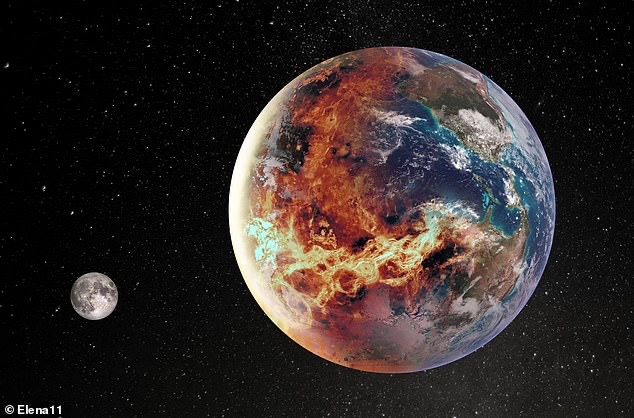New Study Suggests Human Extinction in 250 Million Years, Even Without Fossil Fuels.
A recent study conducted by experts at the University of Bristol paints a grim picture for humanity’s future on Earth. According to computer simulations, a mass extinction event is looming, set to eradicate all mammals in the next 250 million years. This catastrophic event would subject any surviving lifeforms to scorching temperatures ranging from 104°F to 158°F (40°C to 70°C).
What’s even more concerning is that these calculations do not account for greenhouse gases emitted by the burning of fossil fuels and other human activities. This means that the actual timeline for our extinction may be much sooner than projected.
If this grim scenario unfolds, it would mark the first mass extinction event since the demise of the dinosaurs around 66 million years ago, caused by a colossal asteroid impact.
The Earth’s tectonic plates, which move at a rate of a few centimeters per year, periodically come together to form supercontinents that last for hundreds of millions of years before breaking apart and repeating the cycle. The study, led by Dr. Alexander Farnsworth, envisions a future where Earth’s continents merge to create a supercontinent known as “Pangea Ultima” in 250 million years.
In this distant future, Earth’s landmasses would form a doughnut-shaped configuration with an inland sea, replacing the once-mighty Atlantic Ocean.
The majority of Earth’s surface would be covered by the expanded Pacific Ocean. While the precise arrangement of continents may vary, scientists are confident that the result will be a hot, arid, and largely uninhabitable world.
Tectonic processes responsible for merging continents would lead to more frequent volcanic eruptions, releasing massive amounts of carbon dioxide (CO2) into the atmosphere, further exacerbating global warming. Additionally, the gradual brightening of the sun is steadily increasing temperatures across the planet.
ALSO SEE: Anikha Surendran Biography, Career, Age and Net Worth
Dr. Farnsworth warns that this supercontinent scenario would create a “triple whammy” of factors contributing to extreme heat and a lack of food and water sources for mammals. Widespread temperatures between 40 to 50 degrees Celsius, along with high humidity levels, would seal the fate of mammals.
The study employed advanced climate models to simulate future conditions on Pangea Ultima, along with models of tectonic plate movements and ocean chemistry to estimate CO2 levels. Notably, the researchers did not factor in CO2 emissions from burning fossil fuels, a significant driver of contemporary climate change.
Estimates indicate that CO2 levels could rise from the current 400 parts per million (ppm) to over 600 ppm in the distant future, assuming humans cease burning fossil fuels. However, the reality may be much bleaker if fossil fuel emissions continue unabated.
The study suggests that only a small fraction of land, between 8 to 16 percent, would remain habitable for mammals, and even then, most mammal species would likely face extinction. The supercontinent’s location primarily in the hot, humid tropics would subject much of the planet to extreme temperatures.
Dr. Farnsworth speculates that humanity might survive if we construct environmentally-controlled shelters with air conditioning, but such an endeavor would require similar infrastructure for food production. Alternatively, the possibility of establishing civilizations on other planets in different solar systems remains a topic of science fiction.
This grim future underscores the urgency of addressing climate change and the profound impact of human activities on the planet’s long-term prospects.

